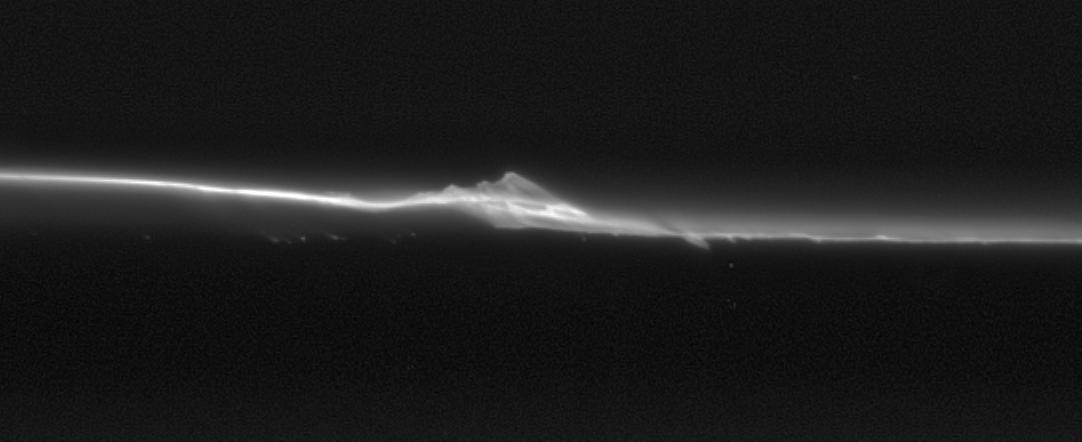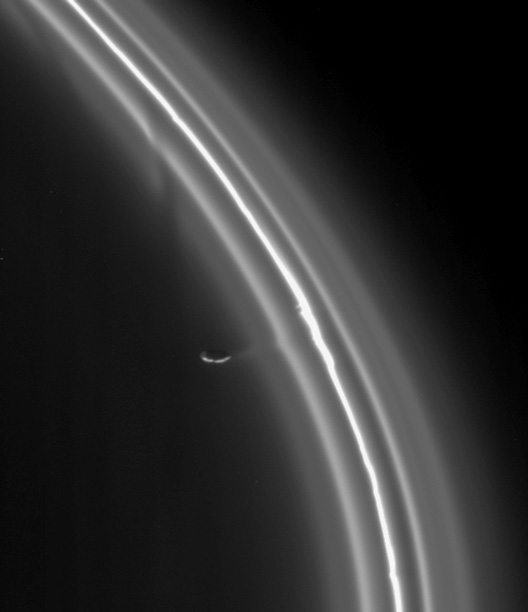Colliding moonlets
Images capture the impacts that shape Saturn’s F ring
- More than 2 years ago
What astronomers consider Saturn’s strangest ring now turns out to be one of the most transparent, at least in terms of the physics that shapes it. The first images of moonlet collisions within the rocky ring, called Ring F, have provided direct evidence for what makes this disk system so different from all the others.


“The F ring is just so bizarre, with its ever changing twists and turns, and multiple strands,” says Carl Murray, lead author of a new study about the ring. “The whole F ring region is a chaotic mixture of a ring trying to behave itself but being subjected to constant interruptions from nearby moonlets colliding with it.”
Using the Cassini spacecraft, Murray and his colleagues at Queen Mary, University of London and the University of Paris took images of the ring and the moonlet objects lying around and embedded in the ring’s core. The images, published in the June 5 Nature, show for the first time the results of the moonlets’ collisions with one another.
The astronomers saw sheared jets of matter extruding from the ring. The material spewed away from the ring’s core provided Murray and his colleagues with tracer material to detect how the objects’ impacts with one another and gravity actually shape the F ring.
What is unusual, Murray says, is that the collisions and gravitational pull of the moonlets have only a temporary effect on the disk. The core of the F ring appears to survive despite the collisions and attraction between the objects — at least in the short-term.
“Ultimately, the effect of collisions, in particular, has to take its toll,” Murray says, especially because the large-scale crashes between moonlets happen in the ring almost every day.
Since 1979, when Pioneer 11 first discovered Ring F, scientists have known that its appearance is constantly changing. But in the new study, Murray’s team reports that the F ring’s shape can fluctuate in a matter of hours.
Murray says that ring particles are always colliding with each other in Saturn’s other rings, too. But in the F ring, some of the objects are a few kilometers in size, and the impact velocities are hundreds of times faster than astronomers find in the more “well behaved” ring systems. Collisions on this scale — between members of the same ring system — do not occur anywhere else in the solar system, he says.
What’s happening in Saturn’s disks resembles what’s happening in the planet-forming regions around young stars, says Larry Esposito, a planetary scientist from the University of Colorado, Boulder.
Because the F ring is transparent, he says, it is easy to see the collisions happening there, unlike in the other rings of Saturn, which are more hidden from view. The F ring, in essence, is one of astronomers’ only local laboratories for studying what happens when kilometer-sized objects are colliding, at relatively fast velocities, pretty much all the time, Esposito says.







